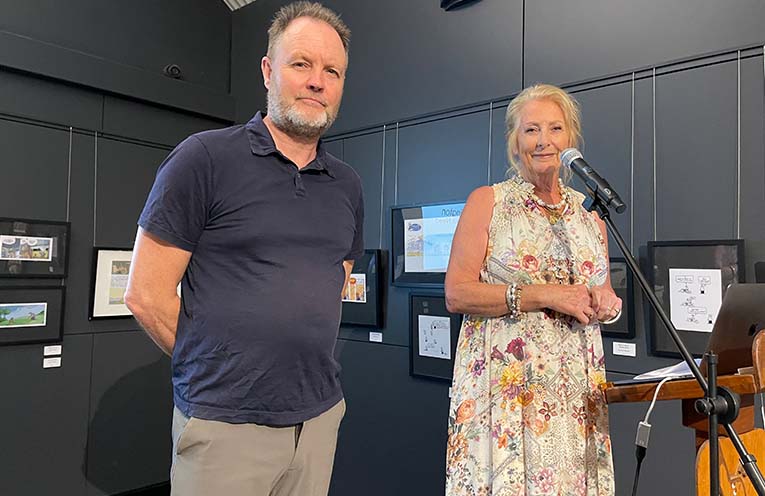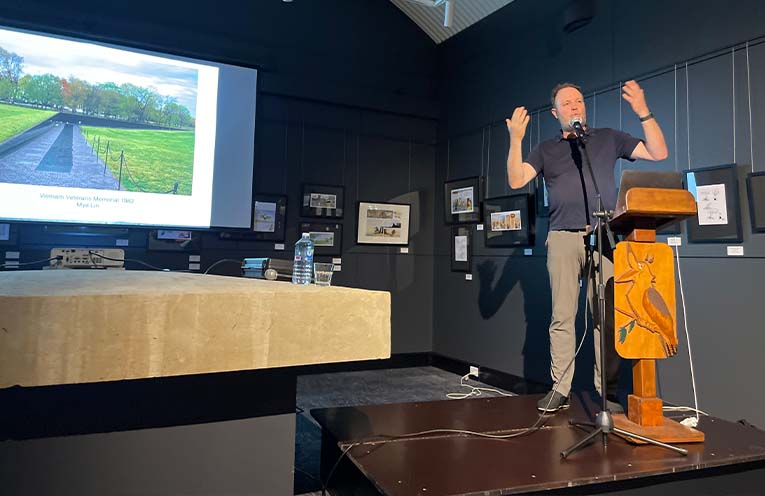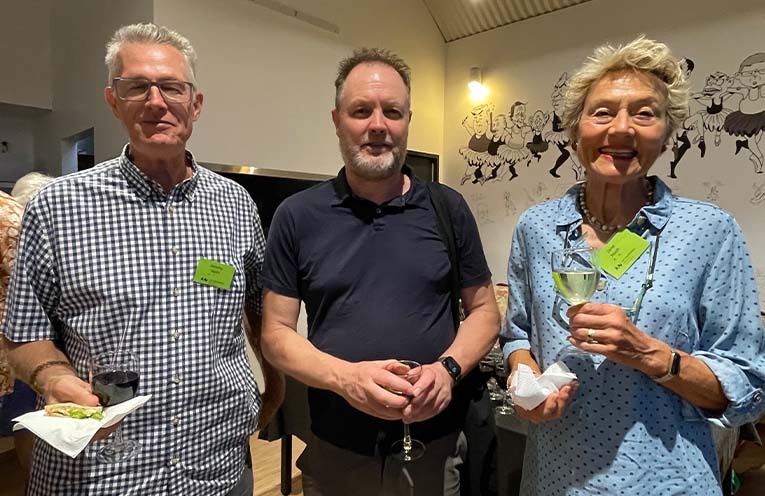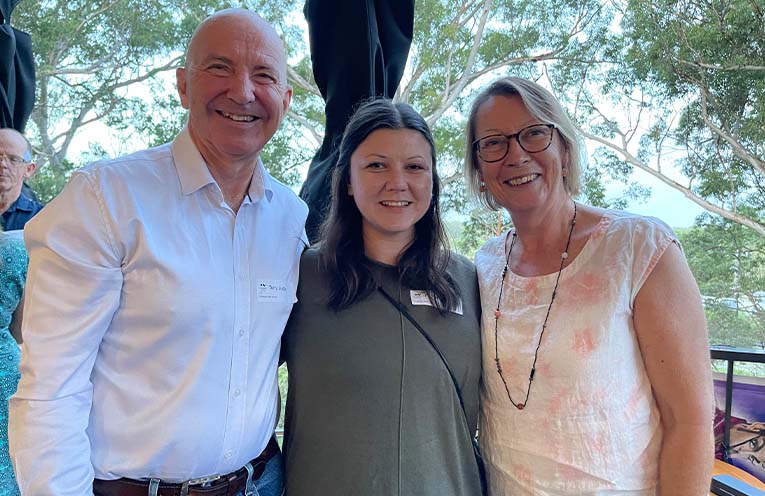
ARTIST and sculptor David Worthington opened his recent ArtsNational Coffs Coast talk on public art with the question: ‘Does a roundabout need art?’.
“Well,” he posed, “it depends.”
 Advertise with News of The Area today.
Advertise with News of The Area today.It’s worth it for your business.
Message us.
Phone us – (02) 4981 8882.
Email us – media@newsofthearea.com.au
Thus began a lively presentation which prompted keen interaction from the gathering of over 140 people.
“An evening of questions without easy answers,” is how ArtsNational Coffs Coast spokesperson Annie Talvé described the event.
Mr Worthington’s own public artworks exhibit what he calls ‘embraceable art’.
Citing a local example of this kind of durable public art, the gathering commented on the set of dolphins adjacent to the Coffs Jetty Boardwalk.
People can look, touch, climb over and sit on the dolphins without damaging them.
While, as Mr Worthington argues, sculpture generally equates to physicality, not all public art invites touch.
“Emma Coulter’s ‘Let Them Feel The Light’, which clings to three levels of brickwork in Yarrila Place, attracts the eye through colour, scale, and the sense of energy and movement she creates through the clever combination of steel and glass,” noted Annie.
Public artworks can, Mr Worthington observed, be controversial at the outset and loved over time.
For example, he said, Anthony Gormley’s famous Angel of the North (1984) in Gateshead, England was deeply controversial during its inception, but now serves as a symbolic emblem of Northern pride.
This led to the question of: What we might value tomorrow but not today?
History can change our perspective completely, Mr Worthington explained.
“Once a hero, now a villain, we’ve seen public monuments erected to dictators, slave traders and criminals unceremoniously toppled to cheering crowds,” he said.
“Public art can be political, particularly when it comes to its possible removal, replacement, retention or preservation somewhere else.”
Public art can also be ephemeral.
Christo and Jean-Claude, partners in life and art making, were famous for wrapping notable buildings and spaces in fabric.
The Pont Neuf Bridge in Paris, Brandenburg Gate in Berlin, and even Sydney’s Little Bay (1969) were transformed by the pair’s commitment to drawing attention to the fleeting nature of human experience as opposed to permanence and immortality.
Even ‘bad’ public art can serve a purpose, argued Mr Worthington.
It stimulates future generations of artists to do something better, more imaginative, and, hopefully, site specific, he said.
Mr Worthington’s questions and examples contributed to lively conversations with him and between audience members.
The general consensus was that the City of Coffs Harbour could do with more striking public artworks.
Some speculated as to whether a building like Yarrila Place itself could simultaneously be a public artwork.
Many audience members queried why public art is often seen as a waste of ratepayer’s money, while sports stadia are not.
ArtsNational Coffs Coast welcomed the presence of Councillor Tony Judge, who “graciously fielded lots of ideas about future public artworks in Coffs Harbour”, said Annie.
“We hope our next talk on 15 April will also get people talking,” said Annie.
“Australian artist, author, collector and TV presenter Claudia Chan Shaw will present ‘Well Heeled – Shoes Through Time’, a romp through the history of shoes.
“From the comfort of Birkenstocks to shoes as symbols of power and status, Claudia’s talk will be entertaining, informative and possibly controversial.”
For more information visit www.artsnationalcoffscoast.au.
By Andrea FERRARI



